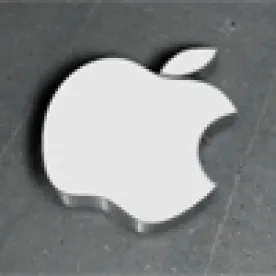For a mobile application developer, clearing the Apple® App Store's® often lengthy approval process and seeing the mobile application available for purchase may seem like the last necessary step to establish use of the name of the application as a trademark "in commerce." However, a recent opinion from the Eastern District of Michigan, Kelly Servs., Inc. v. Creative Habor, LLC, clarified that use in commerce of a mark that identifies an electronically downloaded product available from an online marketplace occurs when a customer actually purchases and/or downloads the application for the first time. Though the USPTO accepts screenshots of the online marketplace showing the application available for sale as sufficient evidence of use in commerce, mark owners should carefully review sales records for the date of first sale or download of the application when determining the date of first use "in commerce" to be included in the application.
In the recent lawsuit between Kelly Services, Inc. and Creative Harbor, LLC, timing was everything. Kelly Services, Inc. ("Kelly") started developing its WorkWire mobile application offering employment services in early 2013. The application was approved by Apple® on February 17, 2014, and on February 19, 2014, it was made available for download. Just one day later, on February 20, 2014, the first download was made. Creative Harbor, LLC ("Creative Harbor") independently created an employment-related application in September 2013, and also named it WorkWire. On February 19, 2014, Creative Harbor filed two intent-to-use trademark applications for WORKWIRE, one for goods in Class 9, and the other for services in Class 35. When Creative Harbor later submitted its clearance application to Apple for review, it was rejected - Kelly's WorkWire application was already being offered, and applications with duplicate marks are prohibited by Apple's guidelines. Creative Harbor sued Kelly for trademark infringement.
At the heart of the Court's decision on the priority issue was whether Apple is a "distributor" for the apps listed in its iTunes store. Kelly relied on a decades-old TTAB decision, Raintree Publishers, Inc. v. Brewer, 218 USPQ 272, 1983 WL 51951 (TTAB 1983), to support its defense that it used the mark in commerce before Creative Harbor. In Raintree, a book publisher successfully argued that its priority to the RAINTREE mark began the day that it first sold books bearing the mark to a distributor. In deciding on the parties' cross summary judgment motions, the Court quickly distinguished the sale of an app through an online store from the Raintree scenario in which a distributor purchases books for sale at retail, finding the distributor analogy not applicable in the mobile application store context. Kelly Servs., Inc. v. Creative Harbor, LLC, No. 14-cv-11249, 2015 WL 5013873, at *5 (E.D. Mich. Aug. 21, 2015).
On October 16, 2015, the District Court issued an additional opinion invalidating the intent-to-use applications filed by Creative Harbor on a technicality - finding that Creative Harbor lacked a bona fide intent to use all of the filed-for-goods and services at the time of filing. In the opinion, the Court admonished Creative Harbor for forcing Kelly to litigate the intent issue, given that it could have cured the lack of intent problem prior to litigation by deleting all of the goods and services for which it did not intend to use the mark. Rather than just merely striking the extraneous goods and services from the applications, the Court went so far as to void the applications in their entirety, seemingly to punish Creative Harbor for its inequitable conduct. As of October 29, 2015, only Kelly's WorkWire application is available for download in Apple's App Store.
There are several important takeaways from the WORKWIRE saga:
First, mark holders should consider filing intent-to-use applications as soon as they determine which goods and services will be used in connection with their mark. If Kelly had filed an intent-to-use application for WORKWIRE in early 2013 when it developed its mobile application, it would likely have clear priority to the mark.
Second, applicants filing marks on an intent-to-use basis should review their pending applications periodically and delete the goods and/or services that they no longer intend to use in connection with the mark. Filing and maintaining an intent-to-use application for the purpose of reserving a right for possible future uses without a bona fide intent to use the mark can be a basis for invalidating an application or cancelling a registration.
Finally, mobile application developers applying for trademark rights for the name of their mobile application should remember that the date of first use in commerce relates to the first sale or download of an application, not the date of availability in the App Store.




 />i
/>i
